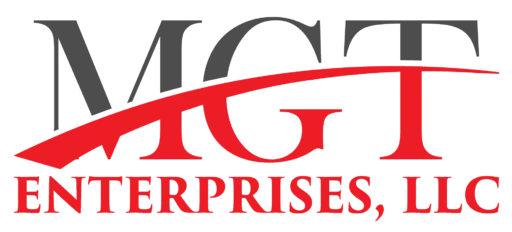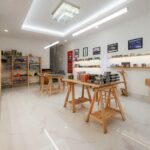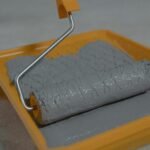Think of metal framing as the spine of contemporary green buildings, a durable, adaptable, and surprisingly green material. Today’s projects are even more reliant on sustainable metal framing to achieve aggressive energy and certification goals, while embracing long-term performance.
With its high recyclability and lower embodied carbon, eco-friendly steel framing is now a key component in LEED pathways and other green building standards. It often outlasts the structures it supports and comes with verified environmental data that aligns with low-carbon policies and industry sustainability standards.
Sustainability Benefits
One of the most compelling advantages of sustainable metal framing is its recyclability. Steel can be recycled, melted down, and reused indefinitely, without ever losing its structural strength, unlike many traditional materials. This is because steel is 100% recyclable, so every project is a contribution to the circular economy, reducing construction waste, and helping to alleviate material use responsibly.
In addition to recyclability, most eco-friendly steel framing products have a high degree of reusable content at the outset. Builders derived indirect carbon savings through the embedded sustainable use of recycled steel into the embodied carbon of each project. This stacks into reducing the overall impact of their projects, and easier to hit certification targets like LEED or Green Globes.
Design flexibility is another one of its characteristics. Sustainable metal framing is in line with modular and prefabricated construction systems that eliminate onsite waste and more efficiently utilize materials. By realizing clean waste or simple disposal in the project trail from disposal reduction, storage footprint length, they can save time and labor, and contribute to the sustainability profile of their project and climate objectives, benefiting both project certification and long-term climate success.
Embodied Carbon And EPDs
Embodied Carbon
Embodied carbon accounts for the greenhouse gas emissions incurred from material extraction, manufacturing, transport, and construction. For sustainable metal framing, reducing this footprint is critical.
Designers are now scrutinizing material options because the embodied carbon of steel framing has considerable implications for lifecycle performance. Lower embodied carbon offers direct support for green building certifications and sustainability initiatives for the long term.
EPD Framework
Environmental Product Declarations (EPDs), especially ISO Type III verified reports, are exemplary at revealing transparent data on the carbon intensity of materials. EPDs used within Steel reveal considerable differences between mills, recycled content, and production methodology.
This framework will enhance accountability for sustainable metal framing and provide residential teams with clarity for informed, sustainable, steel framing decisions and certification pathways.
Reduction Prospects
Recent industry EPDs indicate significant differences in the carbon of steel products based on how it was sourced and recycled. With a higher priority on recycled content and improved mills, project teams are utilizing sustainable metal framing.
Not only is lowering the project’s embodied carbon impacts, but also creating better sustainable metal framing practices and strengthening their alignment with green building certifications like LEED or WELL.
LEED Pathways
Credit Alignment
Sustainable metal framing plays an important role in earning LEED v4.1 credits for Building Product Disclosure and Optimization (BPDO). The sustainable attributes of its steel framing, which include recycled content and transparency through EPDs, will earn points.
Simultaneously, teams can promote responsible sourcing with reduced impacts, durability, and compliance reporting and documentation requirements.
Embodied Carbon
Embodied carbon performance is gaining new importance under LEED v5. Sustainable metal framing helps with this by offering products with verified EPDs with lower lifecycle emissions.
Compared to what a typical solution would be, sustainable steel framing will support a project in meeting embodied carbon limits faster, supporting climate action objectives with acknowledged performance-based carbon reductions.
Strategic Compliance
In order to maximize your points, project teams should thoroughly document all the tested framing assemblies and maintain total transparency regarding your manufacturer. Because of the nature of sustainable material, if you move towards a form of metal framing, you are taking a step towards efficiency. By specifying and documenting a sustainable steel frame, the builder is augmenting their certification efforts and future-proofing the building in terms of LEED’s evolving standards.
Policy And Market Drivers
Policy Momentum
The emerging phase of Buy Clean initiatives and changing public procurement policies is increasingly prioritizing low-carbon materials. Sustainable metal framing occupies a unique, helpful space because it closely resembles these policy, regulator, and framework systems.
Moreover, the recyclable properties of eco-friendly steel framing, as well as its embodied carbon honesty and durability, position it as a key player in projects competing in policy-driven green spaces.
Evolution of Standards
Model codes like ASHRAE 189.1 and the International Green Construction Code (IgCC) are establishing stricter sustainability requirements. Eco-metal framing headlines compliance with standards.
Specifying eco-metal framing provides a proactive response to emerging requirements by addressing legislation objectives and, at the same time, prepares the project for a long-term successful outcome for systems that promote certifications in line with legislation.
Industry Guidance
Organizations like the American Institute of Steel Construction (AISC) and the American Iron and Steel Institute (AISI) offer resources for benchmarking embodied carbon reduction. The AISC and AISI guidance now gives project teams the ability to use sustainable metal framing while also demonstrating the environmental performance. Sustainable steel framing has become central to strategies that advance compliance and competitiveness.
Practical Design And Procurement Actions
- Member Optimization — Find the right-sized frame members to avoid excessive structural material, reducing embodied carbon while optimizing use outside of eco-friendly steel framing construction.
- Cold-Formed — Select appropriate cold-formed steel systems that maximize the strength-to-weight ratio for sustainable metal framing practices while reducing unnecessary consumption of carbon-intensive resources.
- Low-Carbon — Specify steel products sold in compliance with, or manufactured in accordance with, Electric Arc Furnace (EAF) routes, so eco-friendly steel framing will be consistent with strategies to reduce embodied carbon.
- EPD Language — Require procurement documents to include EPD-based specification language so they are required to have transparency, accountability, and sustainability in metal framing specifications consistent with certification goals and requirements.
- Mockup Review — Conduct mockup reviews early to fast-track the confirmation of assumptions in the design process, validate detailing strategies, and expand on eco-friendly steel framing performance expectations in all types of construction.
- Waste Management — Implement strict and reasonable on-site waste segregation procedures and strong recycling programs to support circularity for sustainable metal framing projects in relation to certification requirements.
- Field Quality — Implement significant field quality assurance inspections with respect to eco-friendly steel framing specifications, certification credits, and objectives, and long-term project impacts.
Framing a Greener Future
Sustainable metal framing is an integral component of the green-certified, high-performance buildings of the future. By opting for sustainable steel framing, projects can reduce their embodied carbon, support ongoing compliance with project certification and the evolving demands of policy, and lead with informed decisions that will not only positively impact the planet but also create lasting value and competitive advantage.






